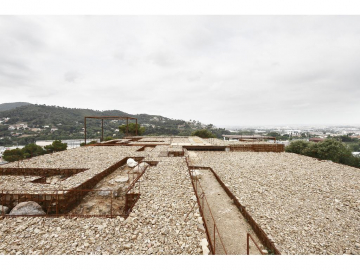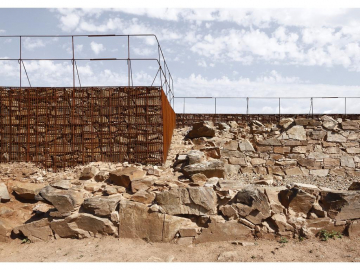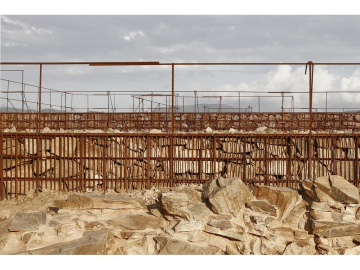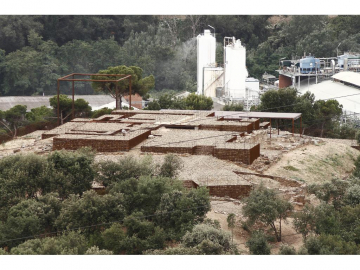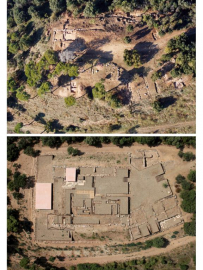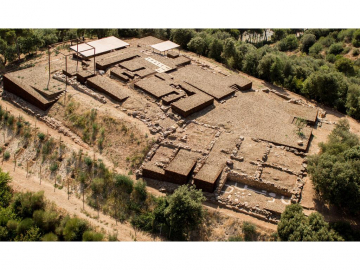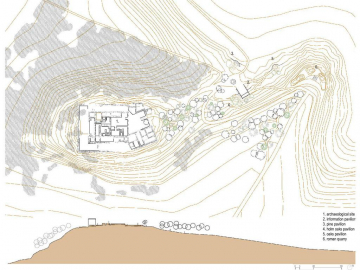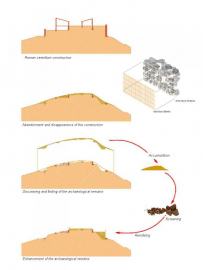Adequation of the Archaeological Natural Site of Can Tacó (2nd cent. B.C.)
MONS OBSERVANS: ADEQUATION OF THE ARCHAEOLOGICAL NATURE SITE OF CAN TACÓ / S. II B.C.
Montmeló, Montornès del Vallès 2008_2013
estudi darquitectura toni gironès
BUDGET: 119.689,00 AREA: 2.500 m²
COST / m² : 48 / m²
The archaeological Roman site of Can Tacó is settled in Turó den Roina, 50 meters above the meeting of the rivers Congost and Mogen, is a natural centre that structures the biodiversity in a highly fragmented metropolitan area. Therefore, the refurbishment of both areas of interest the naturalistic and the archaeological, is crucial.
Walking through an oak forest, we discover the remains of an historical Roman villa, with a clear and strong geometry of its former spaces and with areas of great interest to give value back.
Built by successive terracing and partly made of local licorella stone, which had been an important settlement prior to the construction of the Via Augusta, is today a natural viewpoint to the region of el Vallès.
The project intervenes in the backfill of the Roman traces, enhancing the content (the space) and highlighting the container (the walls). The soil that over time had covered the remains are withdrawn during the archaeological excavation, accumulated apart and used afterwards as one of the main materials. Therefore, this soil, just like the gravels and the rocks of the thought-to-be old Roman quarry, are selected and tidied up with a new disposition, giving them a new lease of life.
A first steel mesh contains the new stones; this subsequently contains soil and gravel, and jointly they will reproduce the successive horizontal planes where the Romans used to transit. A second denser and thinner mesh is arranged like a curtain over a period of time, a backdrop in which the various archaeological remains are projected. Consequently, stone - steel, mountain industry, lives together in this landscape of accumulation with a dynamic contact between fragments. Interpreting the pre-existing, enhancing and activating, adding and not erasing, and at the same time co-evolving with the environment trying to optimize resources.

